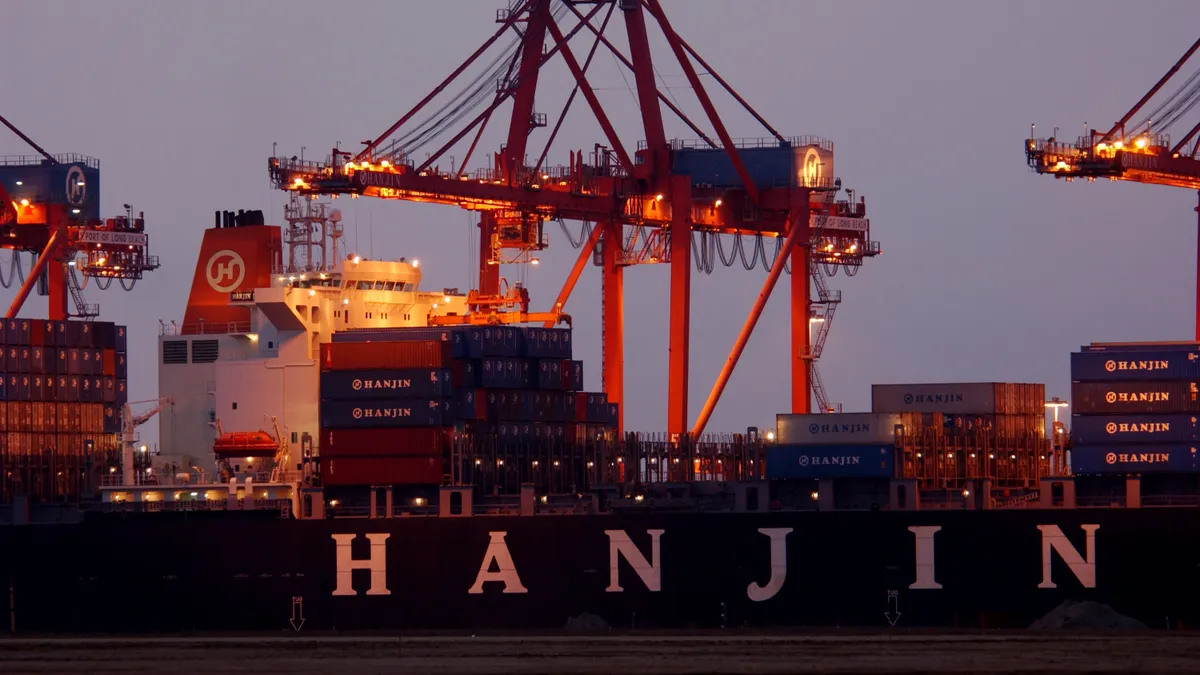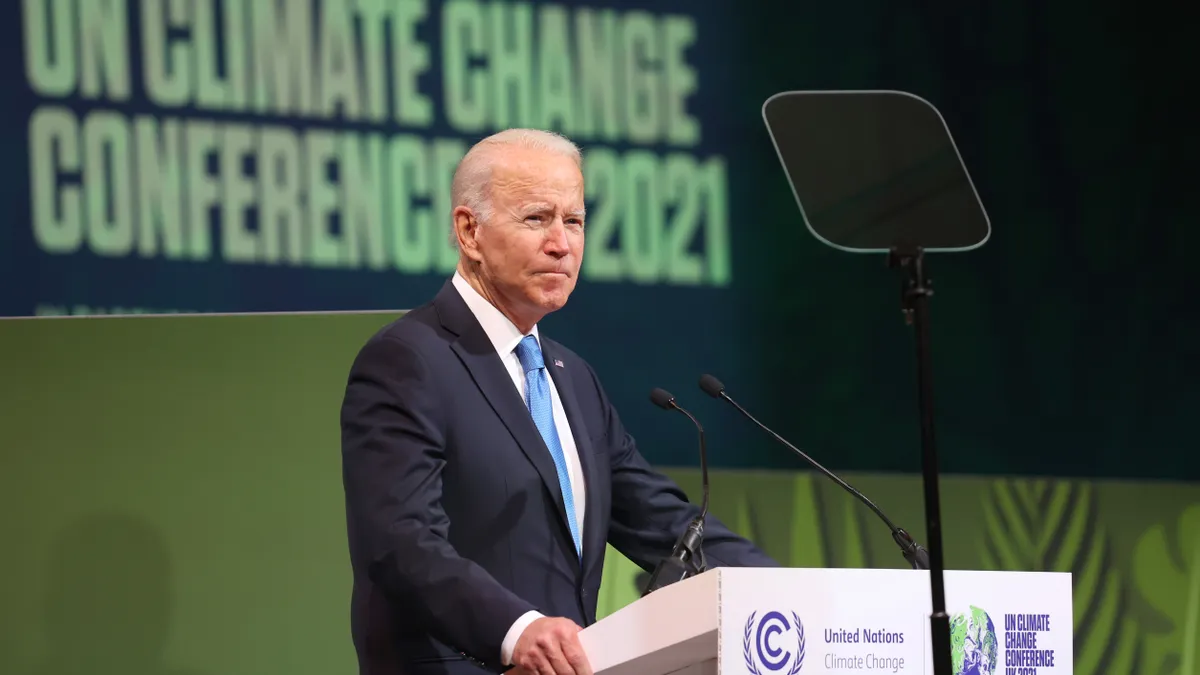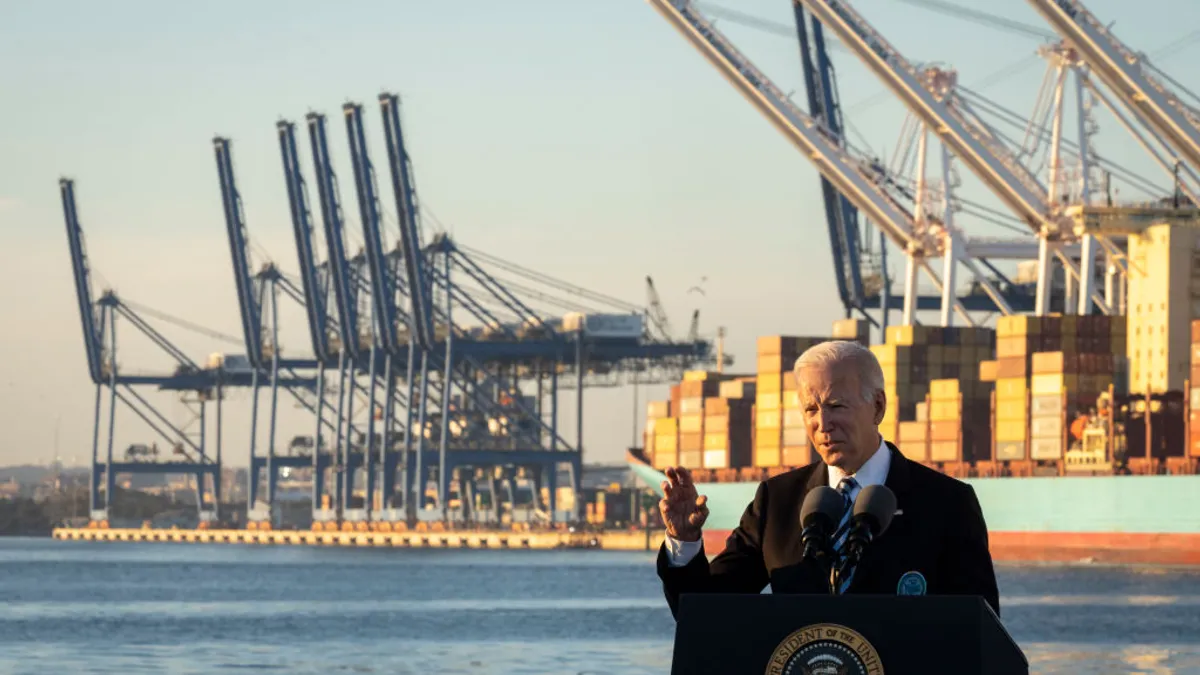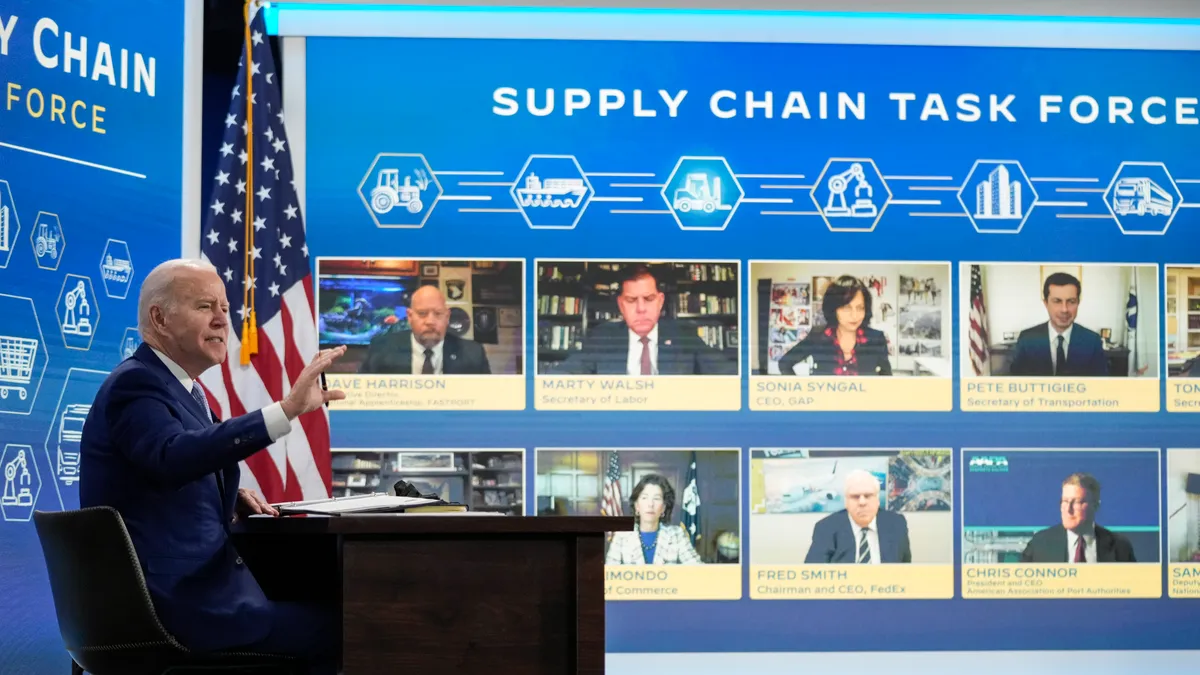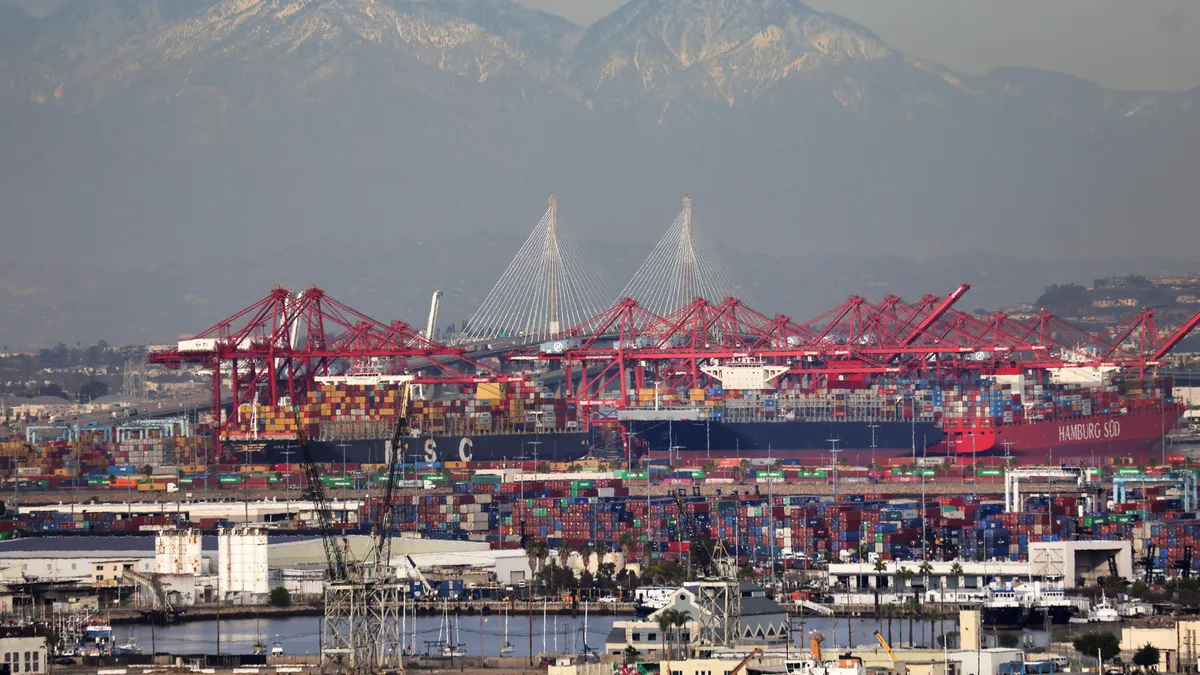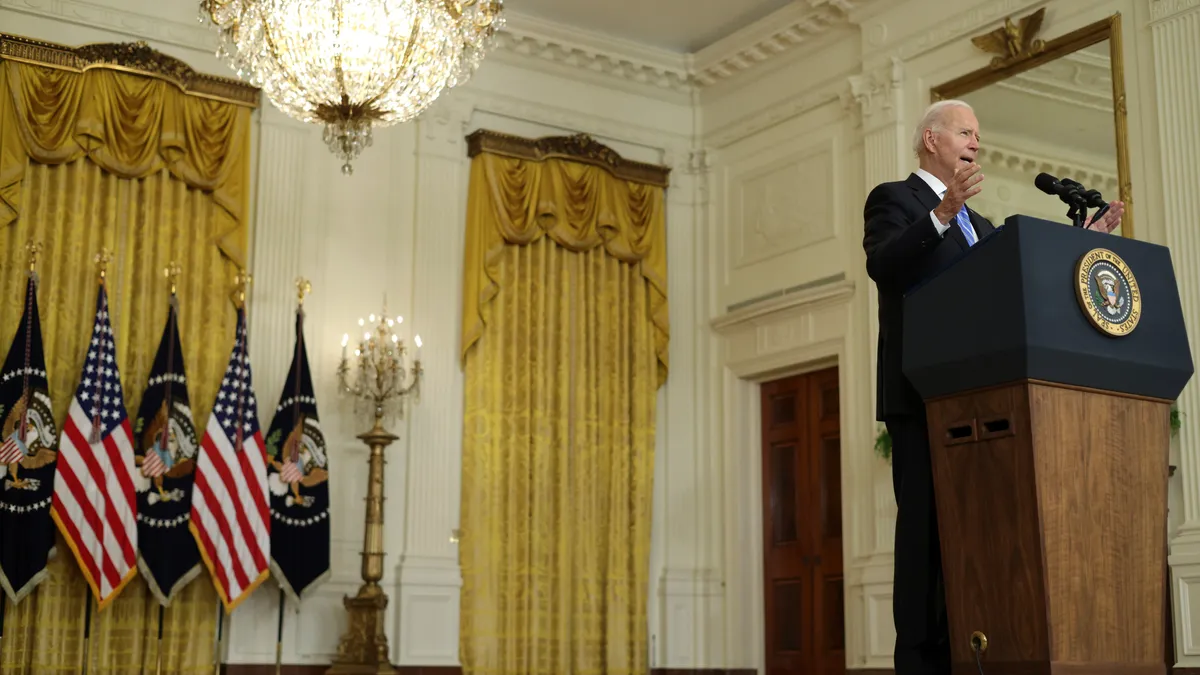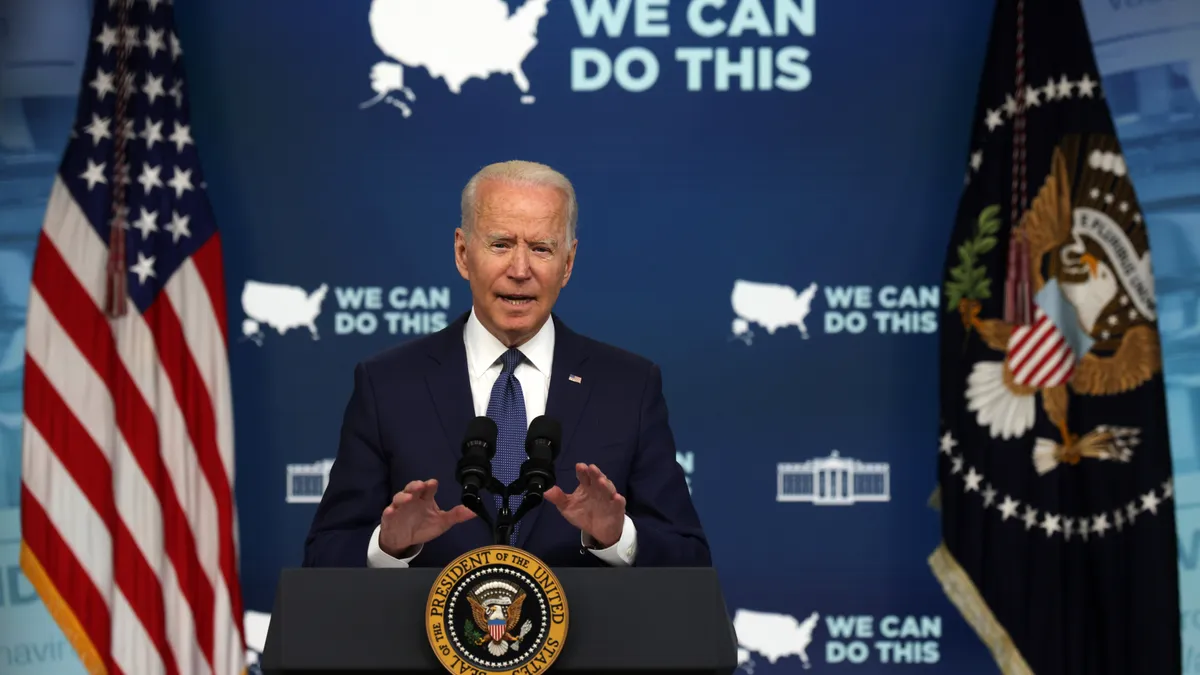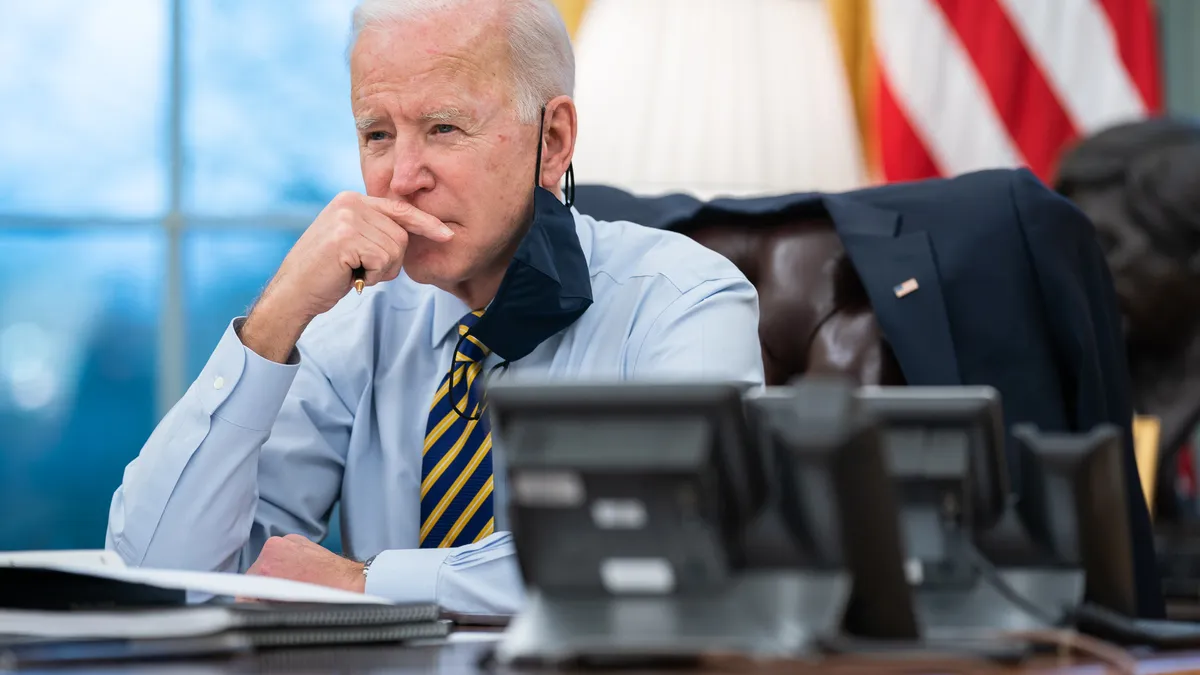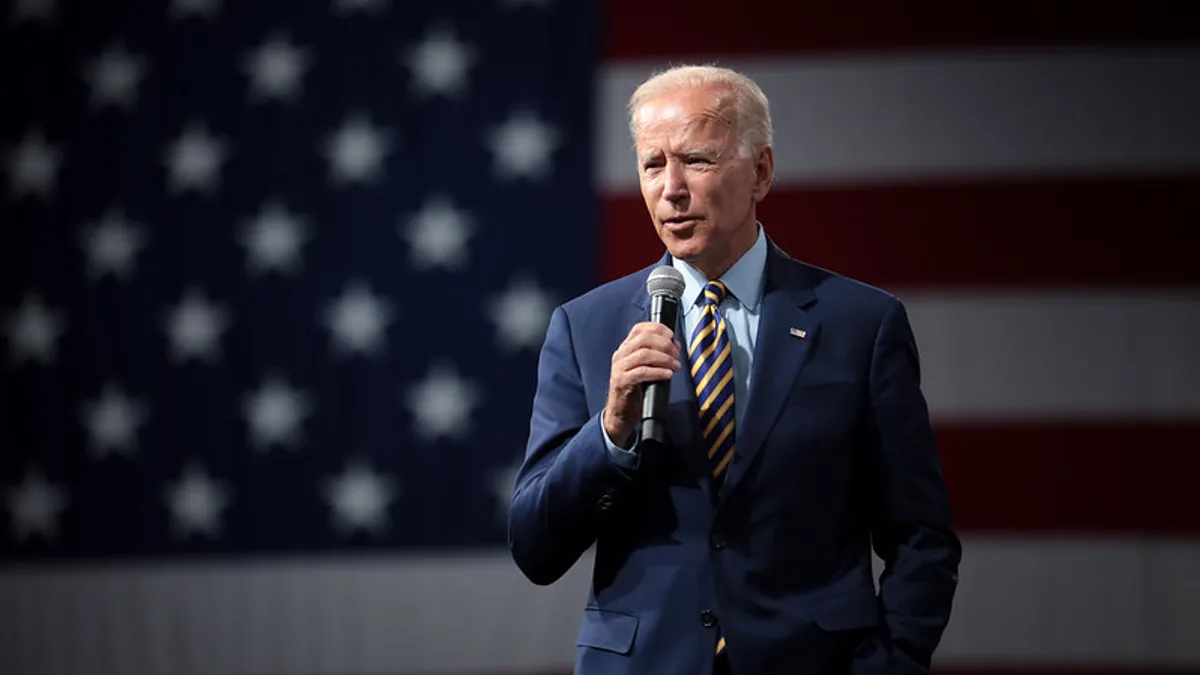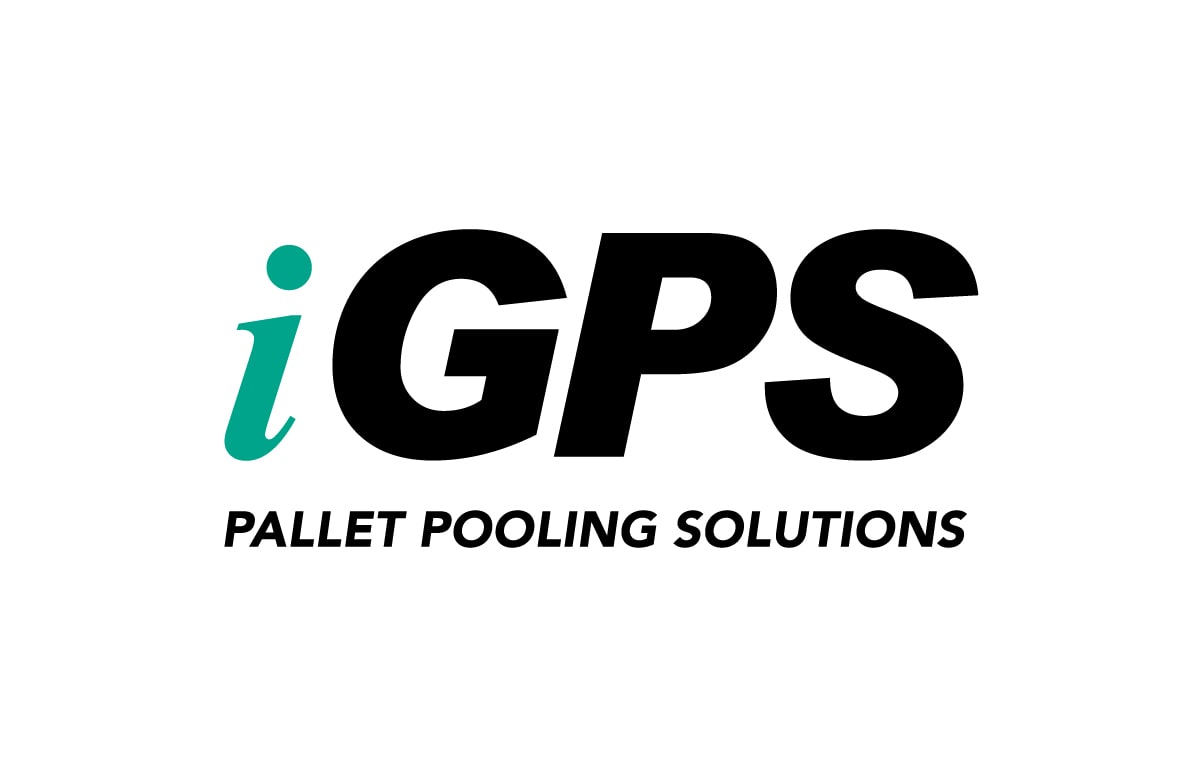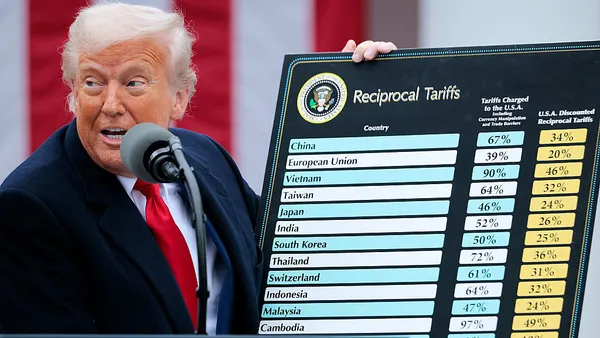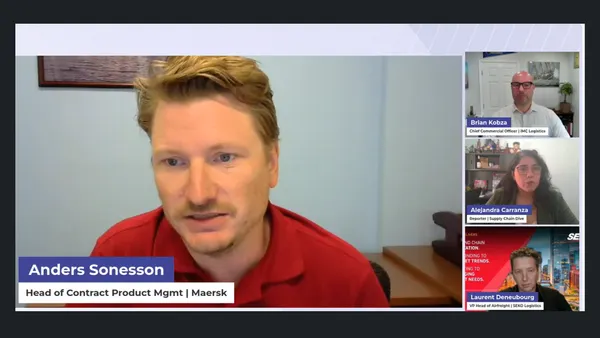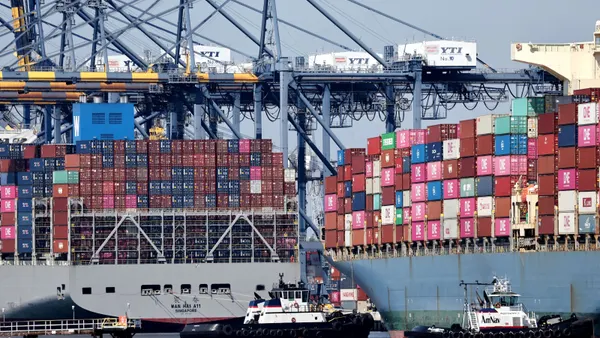Editor's note: This story is part of a series marking Supply Chain Dive's five-year anniversary. Look back at some of the most important stories in supply chain since 2016 in this round-up.
In August 2016, the eyes of the world were focused on a U.S. presidential election, Brexit, the Rio Olympics and just about anything other than a South Korean shipping line named Hanjin.
But five years ago, on Aug. 31, 2016, Hanjin declared bankruptcy. Supply chains were left scrambling. Dozens of container ships, stuck at sea, had to wait to berth at ports. And for months to come, hundreds of Hanjin containers would clog port operations, unable to be moved until someone paid for them.
Among the chaos, though, was opportunity. At the time, Hanjin was the world’s sixth largest ocean carrier by volume. With Hanjin out of the picture, the volume it had been carrying and customers who had relied on its service would need to find capacity with the carriers remaining on the market.
In 2016, the top three ocean carriers accounted for nearly 40% of the market share in ocean shipping. As Hanjin exited stage left, that number was expected to increase.
"The top [carrier], Maersk Sealand, expects to continue growth through 2017 in the wake of Hanjin Shipping’s bankruptcy in 2016, pushing the top three [carriers] to an estimated 42.8% market share," reads a 2018 review of consolidation in the market.
Hanjin didn’t begin nor end the process of consolidation in the ocean market. But the aftermath of the shipping line's bankruptcy and exit from the market provides a example of how consolidation — usually taking place in the form of mergers, acquisitions and space-sharing agreements — has unfolded.
Carriers on a buying spree
Lars Jensen, CEO of Vespucci Maritime, said he gave a speech about 10 years ago at an industry conference where he laid out expectations for more consolidation within the industry.
"A decade ago, we still had around 20 global carriers," he said. "And already way back then I said, 'Well, that's going to change we're going to come down to six to eight.'"
CMA CGM, the world’s third-largest carrier, had in 2015 acquired APL to spur its growth. But shortly after Hanjin’s collapse, CMA CGM was back on the acquisition hunt.
"With the collapse of Hanjin, there will be a wave of consolidation in the sector and CMA CGM is on the look out for opportunities if they should arise," Rodolphe Saadé, then-vice chairman of CMA CGM, said weeks after Hanjin filed for bankruptcy, according to Reuters. (Saadé has since become the carrier's CEO.)
By the end of the following year, seven more large carriers – and many terminals around the world – had either merged or been acquired.
How the top ocean carriers consolidated the market in a few years
-
2015
COSCO, China Shipping announce merger
CMA CGM acquires APL via NOL -
2016
Hanjin Shipping declares bankruptcy
Maersk buys Hamburg Sud
NYK, K Line and MOL merge into ONE -
2017
Hapag-Lloyd buys UASC
COSCO buys OOCL
Size and scale appeases shippers
Gene Seroka said the industry was already looking to consolidate when he was working at APL in the '90s.
It wasn't carriers who acted alone in the '90s and early aughts that led to consolidation. Large importers also played a role, according to Seroka, who is now the executive director at the Port of Los Angeles.
"At the same time, we started to see global companies, those in retail footwear, fashion, even furniture, say that you need a presence — in order to earn our cargo — on a global basis," he said.
That meant carriers needed routes on the Transpacific and Transatlantic with a footprint in Europe and Asia. At the time, there weren't many carriers that offered this kind of global service, he said.
"There was a need from the shippers ... so that's what the carrier has delivered," Jensen said when asked about shipper's role in the increasingly consolidated shipping market.
Jensen said carriers focus on two elements of scale, and both of them can encourage consolidation:
- The size of vessels.
- The size of networks.
The larger the vessel, the lower the unit cost for carriers. But to invest in larger ships, a carrier needs volume. And partnerships and mergers are one way to ensure these larger ships have volume, Jensen said.
Similarly, the more weekly services a carrier offers, the lower the cost, because it can cut down on transshipment, he said.
"Size matters," Jensen said. "That's why a carrier wants to become larger."
Carriers align
Seroka said industry consolidation started with a space-sharing agreement between APL, OOCL and HMM that eventually led to the creation of The New World Alliance.
It "kicked off kind of some inertia around how can you get better economies of scale, wider service coverage, and find a way to cover your cost of capital for new investments if you could partner up with other people," Seroka said.
Over the next two decades, carriers would further refine the agreements to eventually use alliance structures that allowed them to share space and add port calls to each other’s networks.
By 2017, the largest carriers had banded into three different alliances, which together controlled more than three-quarters of global container capacity.
Three major alliances among ocean carriers
When 2M announced it was adding HMM to its vessel sharing agreement, it noted it would be good for the shipper. "MSC is pleased to have signed this MOU, the addition of HMM to the 2M [vessel sharing agreement] will allow us to offer improved services on our trans-pacific trade," MSC said in a 2016 press release.
And Jensen said these alliances do help carriers get the scale they look for by adding more weekly services to their network.
"That clearly is an operational advantage," Jensen said of alliances. "Now, we should not forget that an alliance is just that: operational. The carriers are under no circumstances allowed to coordinate on pricing."
But there are disadvantages for the carriers in these alliances when there is less demand in the market.
The shippers can "play the alliance partners against each other because they're not allowed to coordinate on pricing and quite a number of shippers were very good at playing that game when the market was weak," Jensen said.
Shippers, regulators scrutinize consolidated market
Container shipping is a carrier's market right now, and after continued supply chain disruptions, shippers and regulators alike are beginning to scrutinize whether industry consolidation has contributed to the recent shipping woes.
In July, President Joe Biden announced he would advise agencies in his administration to take a close look at consolidation within a number of different industries in an attempt to increase competition. One of the industries that was explicitly called out was the ocean freight market.
"In 2000, the largest 10 shipping companies controlled 12% of the market," a White House press release reads. "Today, it is more than 80%, leaving domestic manufacturers who need to export goods at these large foreign companies' mercy."
Biden specifically called on the Federal Maritime Commission to look into the high detention and demurrage fees that increased consolidation allowed carriers to charge. This is a practice the FMC was already investigating prior to the executive order, but it will now work with the Department of Justice Antitrust Division more closely on enforcement.
Since then, the FMC has announced an audit program to regularly monitor the detention and demurrage practices of the nine largest carriers. And it has asked the eight largest carriers for details on their congestion surcharges.
Shippers have been increasingly frustrated with ocean carriers over the last year as high demand has constrained capacity, driving up rates. Some cargo owners believe that consolidation has played a role in the high rates and increased inability to secure space for their goods.
In early August, MCS Industries filed a formal complaint with the FMC against two ocean carriers alleging that the companies failed to provide space that was agreed to in contracts and were unfair in their rate practices.
MCS specifically took aim at the consolidated freight market in its complaint, noting that the three major ocean alliances account for 90% of transpacific capacity. "These collusive ocean alliances give Respondents venue and opportunity to coordinate discriminatory practices such as those alleged herein to violate contracts with shippers like MCS in favor of exploiting profit opportunities on the spot market," the complaint reads.
But as shippers and regulators sound the alarm bell, carriers and other industry experts say the benefits of consolidation outweigh the risk.
Is consolidation responsible for shippers' woes?
The issues in the ocean market from low reliability to high prices are an obvious pain point for shippers. But it's hard to blame consolidation, according to Jensen and Seroka.
"I ... see this as an endpoint of a 20-year journey that has been ongoing, both on the merger and acquisition side, and also as alliances getting progressively larger," Jensen said of the current market.
"I don't know that consolidation and alliances are the pure cause of what we're seeing today, but most of the activity in the supply chain is based on consumer demand at levels that we've never witnessed before," Seroka said.
Ports across the U.S. have set import records multiple months over the last year as consumer spending shifting from services to goods during the pandemic. While port capacity was pushed, so was space on the ocean. High demand led to just about all the capacity that is available being used up on ships, meaning cargo owners had few options if they needed more space.
"People are mistaking two different things here," Jensen said. "There is consolidation, yes. There's a massive problem in the containerized supply chain right now, yes. Those two things have nothing to do with each other."



